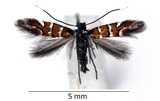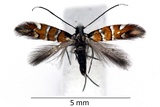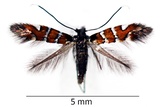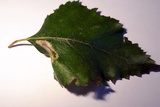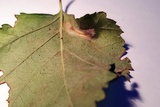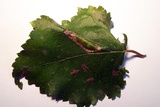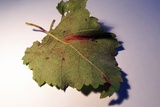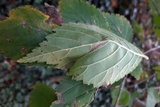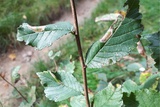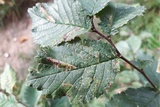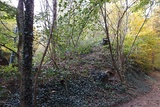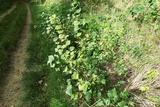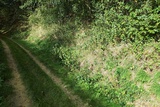Phyllonorycter schreberella (Fabricius, 1781) Species
Last modified: Dec. 10, 2025, 5:59 p.m.
Widespread in Belgium and locally common. Because of the Dutch elm disease (caused by the fungus Ophiostoma novo-ulmi and spread by elm bark beetles, Scolytidae), which caused the death of thousands of Ulmus trees, the larval host plant of this species, it almost disappeared from Belgium in the first half of the 20th century. Hitherto it is present in all provinces.
Details
- Classification
- Family: Gracillariidae > Subfamily: Lithocolletinae > Genus: Phyllonorycter > Species: Phyllonorycter schreberella
- Vernacular names
- Fraaie iepenvouwmot (NL), Small elm midget (EN), Feldulmen-Faltenminiermotte (DE)
- First mention in Belgium
- De Fré Ch. 1858. Catalogue des Microlépidoptères de la Belgique. — Annales de la Société entomologique belge 2: 45–162. On page 157 (L.[ithocolletis] Schreberella. F.). view page
- Status
-
Native
Distribution
Imago
Head black; forewing ground colour golden ochreous to reddish brown; a patch of black scales near the base; white pattern consisting of two transverse bands before the middle of the wing, inwardly edged with black scales; one triangular, costal stria, finely edged with black scales inwardly and a peculiar white dorsal stria connected to an apical white spot.
Mine
A rather small, semi-circular to oval tentiform mine on the underside of a leaf, without any preference of a location, sometimes over a vein. The underside with a series of longitudinal veins. The frass is concentrated in a corner of the mine.
See also gracillariidae.net and bladmineerders.be.
Cocoon/pupa
A tough, greenish, oval cocoon, which lays loose in the mine, it is sometimes attached nowhere, or very loosely to both the roof and the floor of the mine. The cocoon does not contain any frass particles. The greenish colour of the cocoon is unique among all Phyllonorycter species.
Bionomics
The species hibernates in the pupal stage. After the emergence of the adult, the pupal skin protrudes through the mine.
Flight periods
Two difficult to separate generations a year from the end of April till early September.
Observed on
- Host plant (species):
- Ulmus minor, Ulmus glabra and Ulmus laevis
- Host plant (genera):
- Ulmus
The species is monophagous on Ulmus, with a preference for Ulmus minor; it has been recorded also on Ulmus glabra and Ulmus laevis.
